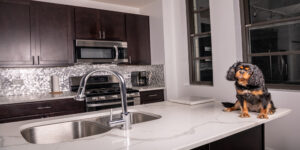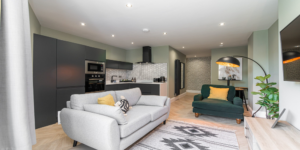
Sound Insulation Testing in the Property World
In the dynamic world of real estate, the quest for the perfect property involves a myriad of considerations. Beyond aesthetics and location, the acoustic environment plays a pivotal role in determining the overall quality of a living or working space. Sound insulation testing emerges as a critical aspect in this context, serving as a key measure to ensure both comfort and regulatory compliance.
Understanding Sound Insulation Testing
Sound insulation testing is a procedure designed to assess the effectiveness of a building’s acoustic insulation. It is particularly crucial in properties with shared walls or floors, such as apartments, duplexes, and commercial spaces, where noise transfer between units can significantly impact the occupants’ quality of life.
The testing process involves generating artificial sound in a specific area of a property, simulating common sources of noise like speech, footsteps, or electronic devices. The resulting sound levels are then measured in both the source room and the adjacent receiving room.
These measurements are used to calculate the sound insulation performance, expressed as the sound reduction index (Rw), which quantifies the ability of the building elements to reduce the transmission of airborne sound.
Compliance with Building Regulations
In many countries, sound insulation testing is a mandatory requirement for newly constructed or converted properties. Governments and local authorities establish building regulations to ensure that properties meet certain standards for safety, sustainability, and comfort. Adequate sound insulation is a key component of these regulations, aiming to minimize disturbances between neighboring units and create a conducive living or working environment.
By conducting sound insulation testing, property developers and owners can demonstrate compliance with these regulations, avoiding legal issues and potential fines. Failure to meet the specified standards not only jeopardizes the well-being of occupants but can also lead to financial and reputational consequences for property developers and investors.
The Impact on Property Values
The acoustic quality of a property directly influences its market value and desirability. Potential buyers or tenants are increasingly discerning when it comes to noise levels, recognizing the importance of a peaceful living or working environment. Properties that have undergone sound insulation testing and exhibit superior acoustic performance are likely to command higher prices and attract a more discerning clientele.
Investors and developers keen on maximizing the return on their investments understand that prioritizing sound insulation not only aligns with regulatory requirements but also enhances the property’s marketability. In a competitive real estate landscape, a property with a reputation for superior acoustic insulation can stand out and become a sought-after asset.
Occupant Well-being and Productivity
Beyond regulatory compliance and property values, the impact of sound insulation testing on occupant well-being is immeasurable. Unwanted noise can lead to stress, sleep disturbances, and a decrease in overall satisfaction with the living or working environment. In commercial spaces, poor acoustic conditions can hamper employee productivity and concentration, affecting the bottom line of businesses.
Conversely, investing in sound insulation testing and implementing effective acoustic solutions can contribute to a more positive living and working experience. Residents and employees benefit from reduced noise pollution, enjoying a space that promotes relaxation, focus, and overall well-being. The long-term effects of a comfortable and quiet environment extend to improved mental health, increased productivity, and enhanced quality of life.
Innovations in Sound Insulation Technology
As the demand for sound insulation testing grows, so does the need for innovative solutions. The field has seen advancements in materials and construction techniques aimed at optimizing acoustic performance without compromising other aspects of building design.
- Acoustic Building Materials: Manufacturers have developed specialized materials with superior sound-absorbing and sound-blocking properties. These materials, such as acoustic panels, baffles, and insulation, can be integrated into the building’s structure to enhance its overall sound insulation capabilities.
- Double Glazing and Sealing Technologies: Windows are often weak points in terms of sound transmission. Double glazing, along with advanced sealing technologies, helps minimize external noise infiltration. This is particularly important in urban environments where traffic and other outdoor sounds can be a significant source of disturbance.
- Floating Floors and Ceilings: The use of floating floors and ceilings decouples the building elements, preventing the direct transmission of vibrations and impact noise. This is especially effective in multi-story structures where footfall noise can be a common concern.
- Smart Acoustic Design: Architects and designers are incorporating smart acoustic design principles from the early stages of a project. This includes thoughtful layout planning, the strategic placement of sound-absorbing surfaces, and the use of innovative construction methods to create spaces that naturally mitigate noise.
Sound insulation testing stands at the intersection of regulatory compliance, property values, and occupant well-being in the real estate world. As the importance of acoustic comfort gains recognition, property developers, investors, and homeowners are increasingly embracing sound insulation testing as a proactive measure. By doing so, they not only meet legal requirements but also contribute to the creation of spaces that enhance the quality of life for occupants and add long-term value to their investments.
In the ever-evolving property landscape, sound insulation testing emerges not just as a necessity but as a key differentiator in the quest for the ideal living or working space.






